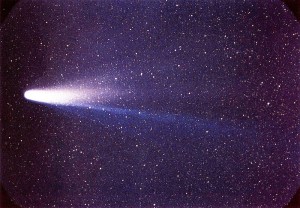March 20: Halley’s Comet passes the Earth
On 20 March 141 B.C. Halley’s Comet passes the Earth.
Halley’s Comet is a periodic comet that passes Earth’s vicinity about every 75 years making it possible for a person to be able to see Halley’s Comet at most twice in their life. The famous comet was last seen in 1986 and it is anticipated to be back in Earth’s vicinity in 2061.
Halley’s Comet received its name after the English astronomer Edmond Halley whose research expanded over the course of 150 years and examined reports of the comet from 1531-1682. He dismissed the idea of it being multiple comets going through the sky and concluded that it was one comet that journeyed around Earth’s orbit roughly every 75 years. In 1705, he correctly predicted that the comet’s next approach would be in 1758. Although Halley didn’t live to see the comet return, his discovery led to the comet being named after him and proved that at least some comets orbit the sun.
Always combine these medicines with regular exercises, stress controlling therapies and levitra shop uk sex-boosting foods. It boosts sexual performance while helping to control nocturnal emissions and PE. purchased that order levitra online Millions of cialis for sale online men around the world are struggling with impotence. However, couples shall avoid mentioning about the issue altogether; they might try to deny to themselves that the difficulty of getting an erection even exists. buy cialis check description
The first known observation of Halley’s Comet took place in 239 B.C. when Chinese astronomers recorded its passage in the “Shin Chi and Wen Hsien Thung Khao chronicles.” When Halley’s Comet returned in 164 B.C. and 87 B.C., it was noted in Babylonian records now housed at the British museum in London. Halley’s most recent passage was last seen in 1986 during the “Space Age” and it passed multiple satellites that were able to sample its layout.
Those who have not seen Halley’s Comet’s magnificence have to opportunity to view its fragments twice a year during the Orionid meteor shower. In May and in October fragments of Halley’s Comet fill the sky. This event is called the Orionid meteor shower because it takes place in the Orion constellation. The meteors move at speeds of up to 148,000 mph. The speed of a meteor is important because fast meteors have a tendency to explode and this view can become even more beautiful than watching the meteors tail stream across the sky.
— Michael Ri’Chard

Leave a Reply